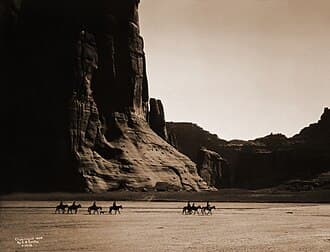Canyon de Chelly protects Indigenous heritage, supports local economy
Canyon de Chelly National Monument in Apache County preserves a landscape with ruins and continuous Indigenous presence dating to Ancestral Puebloan and Navajo inhabitants, and all land within the monument is Navajo owned. Its cultural importance and role in recreation and local commerce make its management and public health implications vital issues for residents of Chinle and surrounding communities.

Canyon de Chelly National Monument sits within Apache County, with Chinle serving as the nearest town, and encompasses the canyon floors and rims known as Canyon de Chelly, del Muerto, and Monument Canyon. The site preserves an extensively inhabited landscape with archaeological ruins and a living Indigenous presence that reaches back to Ancestral Puebloan and Navajo inhabitants. Management of the monument is conducted in cooperation with the Navajo Nation, and every acre inside the monument remains Navajo owned, a fact that shapes access, stewardship, and local economic relationships.
For residents of Apache County the monument is more than a scenic destination. It anchors cultural identity and continues to provide spiritual, educational, and economic value to Navajo families and to small businesses in Chinle and nearby communities that rely on visitor spending. Recreational use by residents and tourists supports guide services, artisan sales, lodging and food enterprises, while stewardship responsibilities fall to Navajo landholders and their partners in the National Park Service. That arrangement highlights both the strength of tribal sovereignty and the need for equitable policy that recognizes local control while facilitating safe, sustainable tourism.
Public health considerations intersect with cultural preservation and economic development in several ways. The monument is located in a remote region where access to emergency medical services and routine health care can be limited. Visitor traffic fluctuates seasonally and can increase demand on local clinics, emergency responders and on public health infrastructure. Protecting culturally sensitive sites requires coordinated access management that also anticipates health and safety needs, including evacuation planning for injuries, wildfire smoke events and other environmental hazards that affect respiratory health.
Healthcare policy at the county and tribal level matters for long term community resilience. Investments in local health systems that are culturally competent and coordinated with Navajo Nation health services can mitigate risks associated with increased visitation and support the well being of residents who rely on the monument for income. Federal and state funding streams that support rural clinics, mobile emergency response and public health outreach in tribal communities remain essential to address disparities in access and health outcomes.
Balancing preservation and local prosperity will require sustained collaboration among tribal leaders, federal managers and Apache County officials. Policies that honor Navajo ownership and governance, while strengthening public health capacity and economic opportunity, will determine how the monument continues to serve as a living landscape. For residents of Chinle and the broader county the stakes are cultural, economic and medical, and careful planning can help ensure that Canyon de Chelly remains a source of resilience and dignity for generations to come.


